Participation
Collective Glossary
Scroll down to see them all or select each word individually on the index
Index
ART AND LIFE by Paayal Patel
CIVIC IMAGINATION by Lucy Adeniji
COMMUNITY by Charlie Pullen
COLLECTIVE CONSTRUCTION by Antonia Antrobus-Higgins
ETHICS AND AESTHETICS by Fleur Cartwright
HAPPENING AND SITUATION by Nano Quirke-Bakradze
LISTENING by Belmiro Costa
NEW SOCIAL ORDER by Fahim Faisal
PUBLIC SPHERE by Anumita Mukherjee
SOCIALLY ENGAGED by Morgan Tanawa-Bamba
SPECTACLE by Eleanor Jolliffe
SOCIAL JUSTICE by Maeve Mclavin
SOCIAL MOBILITY by Heidi Keston
Problems 1A (Lead: Amelia Peterson)
Part of “Contemporary Art Deep Dive”
London Interdisciplinary School
2021
Faculty: María Angélica Madero
Art and Life
Payaal Patel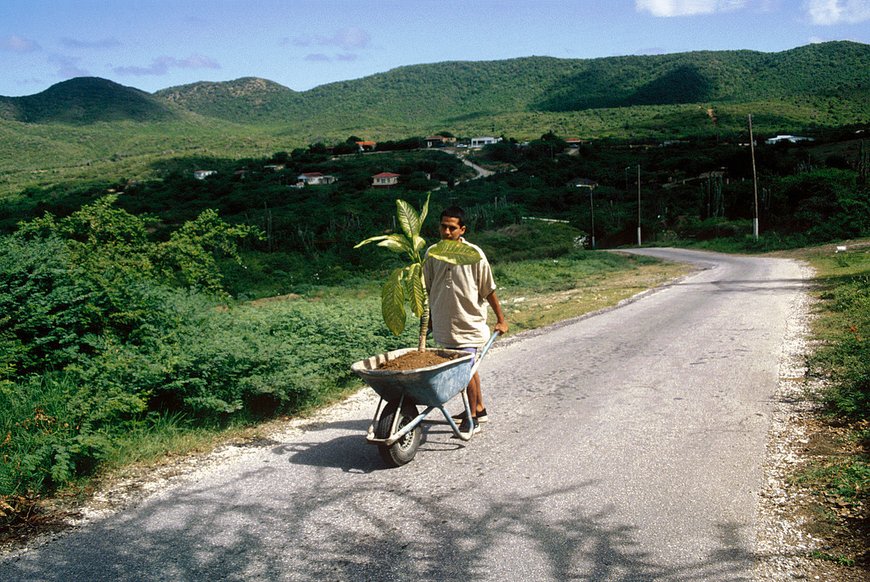 Wilfredo Prieto, Walk, 2000
Wilfredo Prieto, Walk, 2000To define Art and Life, It must be considered how each word stands alone. And then where the two intersect or rather interact.
Life is context, it is today, community, a society of the spectacle and it is lived experience. We are always subject to the forces of the commercial, information overload and consumerism obsessed, this has become our ordinary.
![]()
The situationists. Guy Debord's 1957 Psychogeographique de Paris. Speech on the passions of Love.
Art, specifically Participatory Art is when there is an intention into the exploration of human behaviour in reaction to this ordinary being uncovered as the unordinary. It must disobey that of the spectacle, it must disrupt our day to day thought patterns and habits. It is a witness statement.
![]() Allan Kaprow, Yard, 1961. A key artist in coining Happenings
Allan Kaprow, Yard, 1961. A key artist in coining Happenings
Life is context, it is today, community, a society of the spectacle and it is lived experience. We are always subject to the forces of the commercial, information overload and consumerism obsessed, this has become our ordinary.
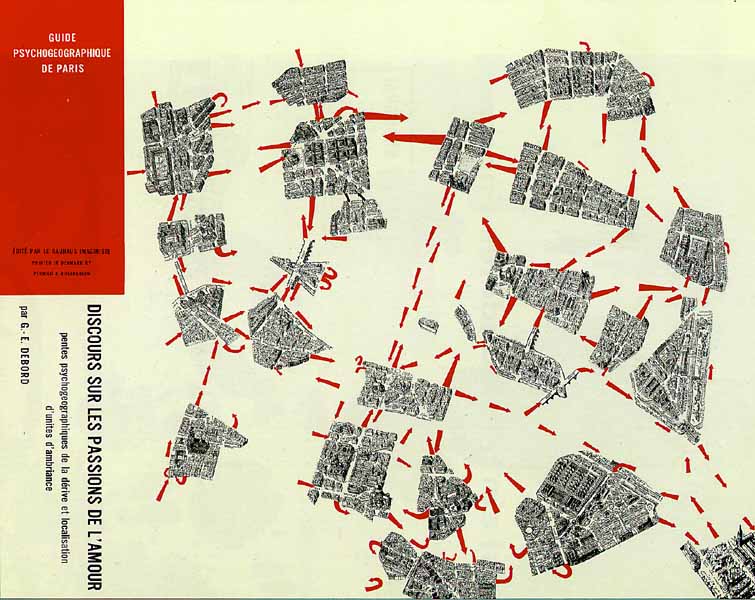
The situationists. Guy Debord's 1957 Psychogeographique de Paris. Speech on the passions of Love.
Art, specifically Participatory Art is when there is an intention into the exploration of human behaviour in reaction to this ordinary being uncovered as the unordinary. It must disobey that of the spectacle, it must disrupt our day to day thought patterns and habits. It is a witness statement.
 Allan Kaprow, Yard, 1961. A key artist in coining Happenings
Allan Kaprow, Yard, 1961. A key artist in coining Happenings
Furthermore, in line with Claire Bishop, participatory art must have sociability and it should work within its immediate context.
Participatory Art therefore, epitomises the parallels between art and life. Examples of this is, the situationists, the happenings movement, task by Oliver Herring and Walk by Wilfredo Prieto, which I will specifically focus on.In Walk, WIlfredo Prieto walks five kilometres with a ornamental plant in a wheelbarrow. Art and Life is emphasised here because it is a performance that quietly defies that of the spectacle.
![]() Oliver Herring's Task.
Oliver Herring's Task.
Prieto states, ‘I believe to happen on a piece rather than create it’ and ‘our brain store what is out of the ordinary’. This resonates with the parallels between art and life because it suggests spontaneity, you don’t choose to participate or not, a prominent feature of life. You the participant are mildly startled into reflecting its meaning and for the briefest of seconds you are pulled out of your thoughts to consider the unordinary, you become attuned to your surroundings, you go from the I to the collective. Art and Life is that which seeks to move from passive of our daily lives to the active.
![]()
Wilfredo Prieto, Walk, 2000
Participatory Art therefore, epitomises the parallels between art and life. Examples of this is, the situationists, the happenings movement, task by Oliver Herring and Walk by Wilfredo Prieto, which I will specifically focus on.In Walk, WIlfredo Prieto walks five kilometres with a ornamental plant in a wheelbarrow. Art and Life is emphasised here because it is a performance that quietly defies that of the spectacle.
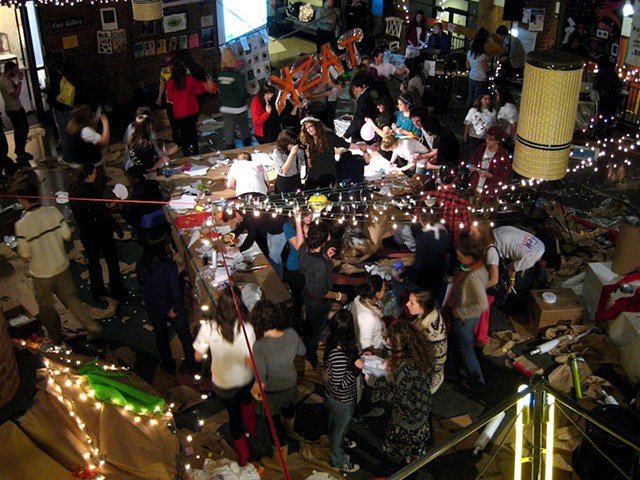 Oliver Herring's Task.
Oliver Herring's Task.Prieto states, ‘I believe to happen on a piece rather than create it’ and ‘our brain store what is out of the ordinary’. This resonates with the parallels between art and life because it suggests spontaneity, you don’t choose to participate or not, a prominent feature of life. You the participant are mildly startled into reflecting its meaning and for the briefest of seconds you are pulled out of your thoughts to consider the unordinary, you become attuned to your surroundings, you go from the I to the collective. Art and Life is that which seeks to move from passive of our daily lives to the active.

Wilfredo Prieto, Walk, 2000
Civic Imagination
Lucy Adeniji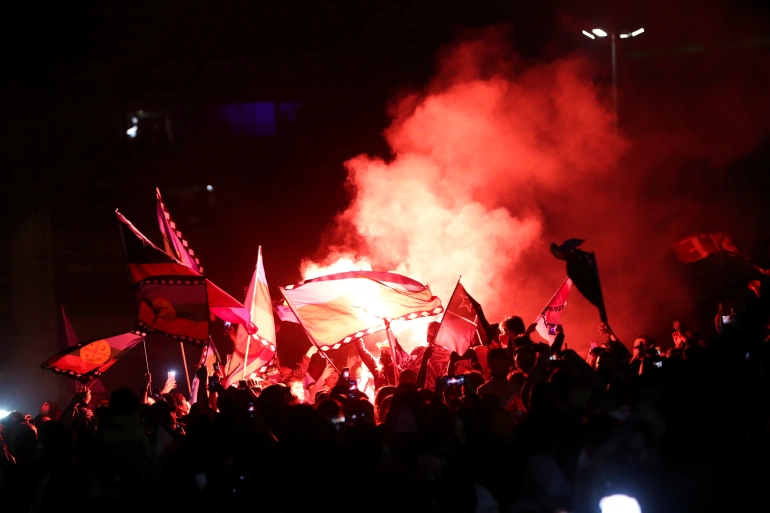 People light flares as they gather to protest against Chile's government during a referendum on a new Chilean constitution in Santiago, Chile, October 25, 2020 [Ivan Alvarado/Reuters]
People light flares as they gather to protest against Chile's government during a referendum on a new Chilean constitution in Santiago, Chile, October 25, 2020 [Ivan Alvarado/Reuters]As ...
A question:
what would a better tomorrow look like?
A quote:
“One cannot change the world unless one can imagine what a better world might look like. Civic imagination is the capacity to conceptualise alternatives to current cultural, social, political, or economic conditions; it also requires the ability to see oneself as a civic agent capable of making change, as a participant in a larger democratic culture.”
—Popular Culture and the Civic Imagination
A poem:
Imagine a better world
Imagine the process of change
Imagine ourselves as civic agents
Imagine our connections with a larger community
Forge solidarity with others with different experiences than our own
Bring an imaginative dimension to our real world spaces and places
—Civic Imagination Project

Congreso de Artistas Chicanos en Aztlan "We Art Not A Minority," Mural Estrada Courts Housing Project East Los Angeles, 1978

An example in the digital space:
Gender inequality has been one of the most serious social problems in Korea; it ranked 116th out of 144 countries in the 2016 Global Gender Gap Report. Megalia, a radical feminist online community established in 2015, was understood as a response to the misogyny both online and offline. Part of their campaign has been to satirically mirror the sexist speeches found on the largely male-based website DC Inside (DC), where female is the normative gender. “It’s the honest thought of foxes to wish her future husband is a virgin… So men, modestly take care of your body as if it’s a precious jewel like a gentleman and give the precious, beautiful gift called virginity to your future wife. [emphasis added]• “The Honest Opinion of Foxes” a mirroring response by a Megalia user posted on DC Inside (Femiwiki)Megalia will be examined as the vehicle that facilitate the civic imagination (Jenkins et al.2016) that led to remarkable solidarity and participation in Korea’s feminist activism. ...
Collective imagination is the first step towards social change. It is the start of a conversation, all must be able to participate. But if we choose not to participate in the conversation, the conversation will be had without us.
For more interesting examples of civic imagination see:
• In art: The 60s Chicano Mural Movement in how Mexican-Americans reinvigorated and reimagined their culture in response to racism.
• In politics: The current redesigning of the Chilean constitution (The constitutional convention) which was created under the Augusto dictatorship and still denies many Chileans proper access to education and healthcare.
• Popular Culture and the Civic Imagination, Case Studies of Creative Social Change, By Henry Jenkins, Sangita Shresthova, Gabriel Peters-Lazaro.

Collective Construction
Antonia Antrobus-Higgins
Collective construction can be understood as the shared process of building meaning. This often results in community healing. Since no human being is the same (compounded by different experiences, oppressions and privileges) this process of course includes listening, negotiation and sympathy.
Unlike traditional western knowledge creation, it is collaborative. Thus collective construction does not create ‘his’ story, but rather stories which are owned by all who are involved.
This has radical potential considering the ‘othering’ & silencing nature ‘his’ story has traditionally created. Typically the most powerful have had a monopoly on our narratives, and so have constructed it in their image. Take for example, Operation Legacy. The destruction of records of colonial atrocities were one of the many ways the British reconstructed the history of its empire. This allowed the empire to be understood largely as a benevolent endeavour.
The toppling of slave trader, Edward Colston’s statue in Bristol in the summer of 2020 is an example of collective construction in action. Ironically, this was achieved by the deconstruction of the statue. The removal of him from his plinth which had described him as a ‘great philanthropist’, signalled a collective statement that Bristollians will no longer be proud of their colonial past. Throwing him into the same river his slave ships docked was a sort of ‘poetic justice’. It solidified his true legacy and history - a philanthropist, enabled by enslavement and murder, who donated enough money to ensure he would be remembered favourably.
In its place, the plinth was showered in BLM protest signs held in the hands of those involved. The moment a black female protestor stood on the plinth was then immortalised as her statue filled the now vacant platform.
The radical nature of collective construction is demonstrated by the backlash the toppling of the Colston statue received. In response, the current Tory Government (in a pandemic) focused on protecting such inanimate statues.
However, one could argue whether collective construction can ever be possible, as the initiator / coordinator is ultimately named - as demonstrated by the below examples.
Unlike traditional western knowledge creation, it is collaborative. Thus collective construction does not create ‘his’ story, but rather stories which are owned by all who are involved.
This has radical potential considering the ‘othering’ & silencing nature ‘his’ story has traditionally created. Typically the most powerful have had a monopoly on our narratives, and so have constructed it in their image. Take for example, Operation Legacy. The destruction of records of colonial atrocities were one of the many ways the British reconstructed the history of its empire. This allowed the empire to be understood largely as a benevolent endeavour.
The toppling of slave trader, Edward Colston’s statue in Bristol in the summer of 2020 is an example of collective construction in action. Ironically, this was achieved by the deconstruction of the statue. The removal of him from his plinth which had described him as a ‘great philanthropist’, signalled a collective statement that Bristollians will no longer be proud of their colonial past. Throwing him into the same river his slave ships docked was a sort of ‘poetic justice’. It solidified his true legacy and history - a philanthropist, enabled by enslavement and murder, who donated enough money to ensure he would be remembered favourably.
In its place, the plinth was showered in BLM protest signs held in the hands of those involved. The moment a black female protestor stood on the plinth was then immortalised as her statue filled the now vacant platform.
The radical nature of collective construction is demonstrated by the backlash the toppling of the Colston statue received. In response, the current Tory Government (in a pandemic) focused on protecting such inanimate statues.
However, one could argue whether collective construction can ever be possible, as the initiator / coordinator is ultimately named - as demonstrated by the below examples.


Temporary installation by Marc Quinn

Rwanda Healing Project (designed by Lily Yeh and built by the community)
Community
Charlie PullenA community is a group of people bound together by something they have in common. Socially engaged art can have a profound effect on how a community functions, in that it can bring people together and highlight issues or people that seem to have been left behind. It can strengthen community ties in an increasingly atomised society.
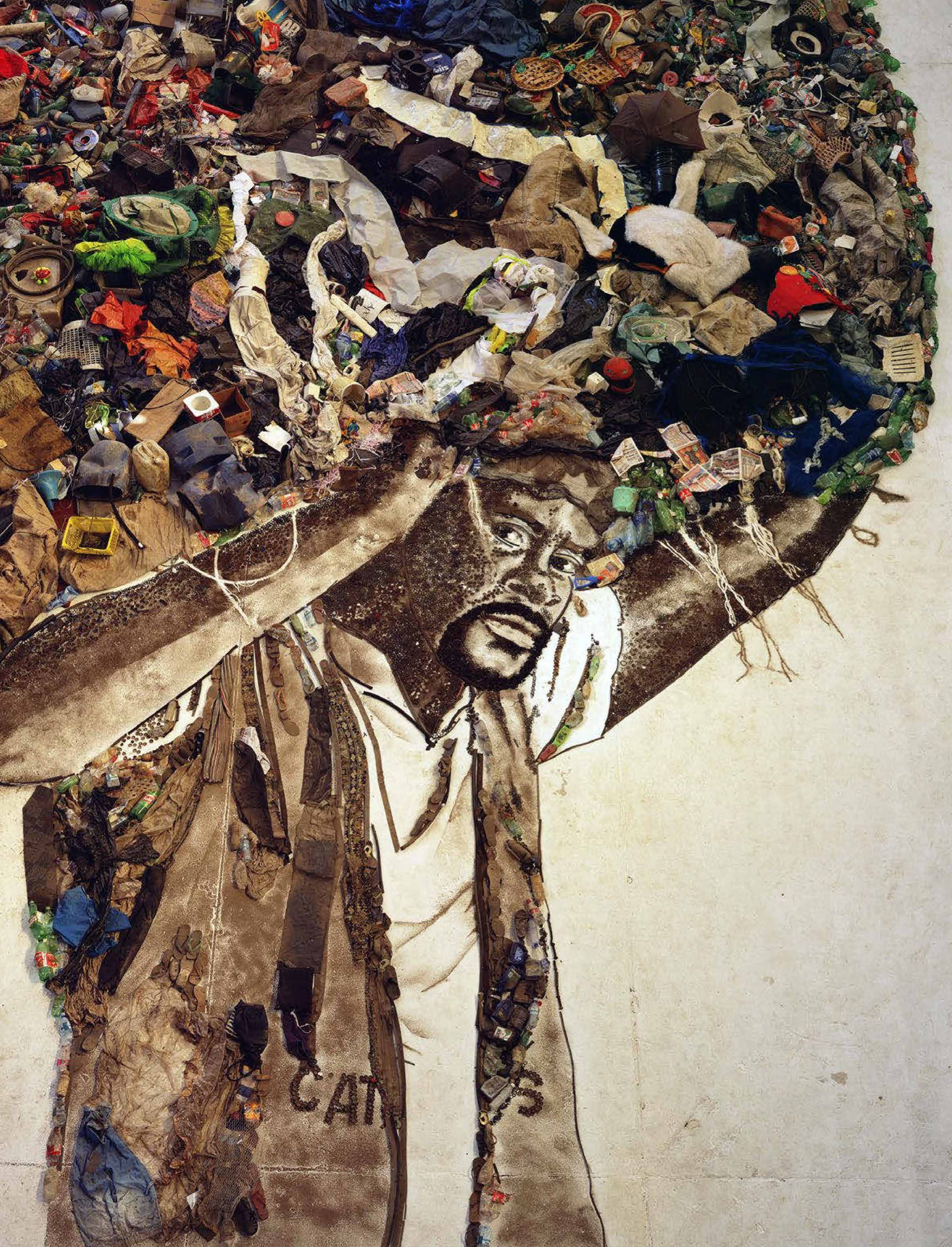
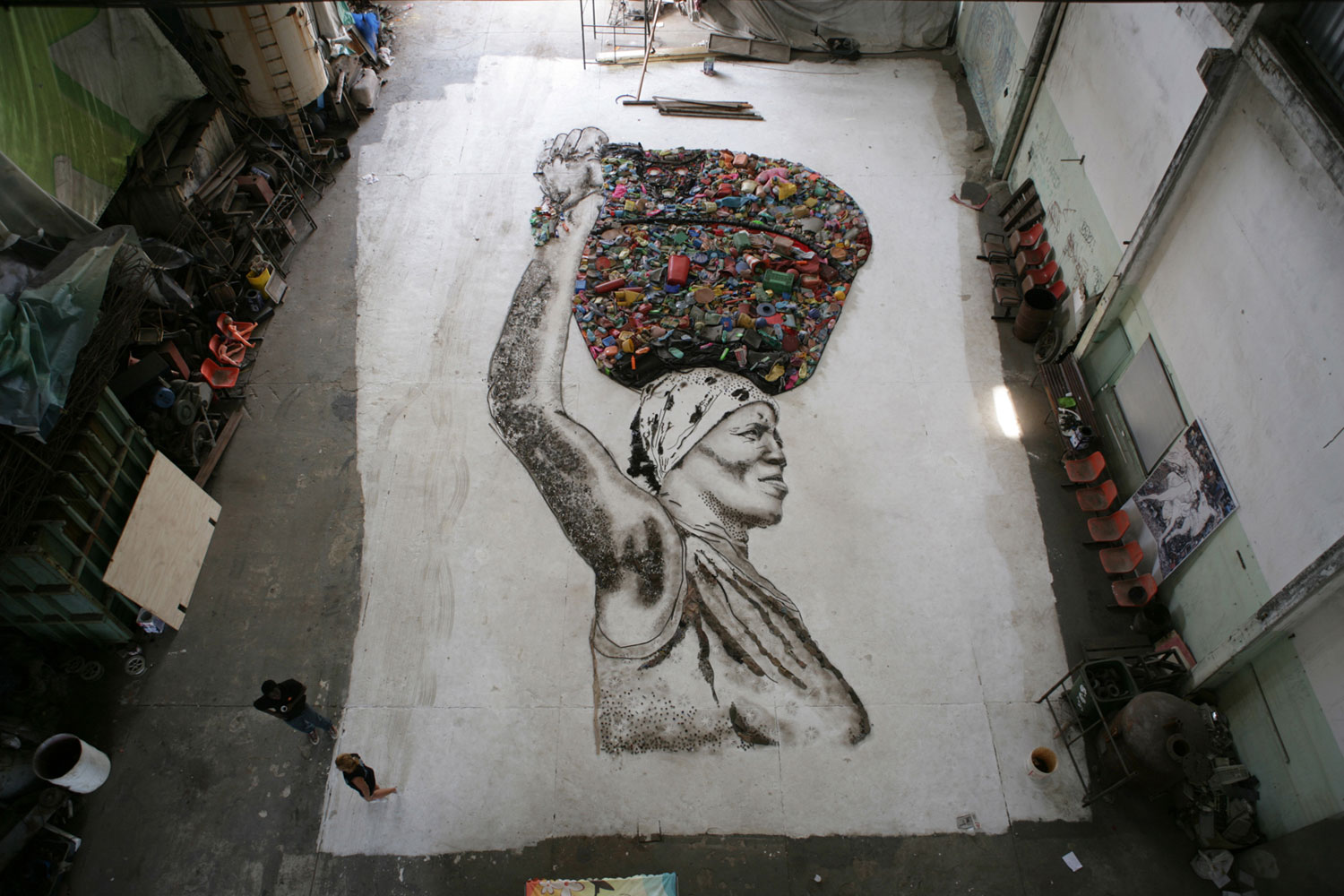
An artist who created an exemplary model for this is Vik Muniz. He travelled back to his native home in 2008 where the world’s largest landfill is located: Jardim Gramacho in Rio de Janeiro, Brazil. Here the ‘workers’ search the landfill site for valuable recyclable materials to pick out of the rubbish thrown away by those who are more fortunate in the Brazilian capital. They pick in dangerous conditions and themselves and their communities are plagued with poverty.
Muniz assisted the workers in creating huge self portraits from the immense number of recyclable items they have recovered during their daily picks at Jardin Gramacho. He did this by taking photos of the workers at the landfill site and projecting them onto a warehouse floor. The workers then helped him recreate the projected image with recyclable items. These ‘Pictures of Garbage’ were sold with the proceeds going back into the community: $200,000 was donated by Muniz and his compatriots in the project.
The project was intended to give the pickers a new perspective on themselves and their communities – improving the way they look at what they do and how it benefits their community. Post project it has been reported that the project has helped lift the social stigma around the pickers work and the Brazilian government is now using the documentation of the project (film – wasteland) to promote recycling nationwide. This gives a feeling of further purpose and inclusion to the pickers in the community of Rio as it recognises and celebrates their work.
![]()
Muniz assisted the workers in creating huge self portraits from the immense number of recyclable items they have recovered during their daily picks at Jardin Gramacho. He did this by taking photos of the workers at the landfill site and projecting them onto a warehouse floor. The workers then helped him recreate the projected image with recyclable items. These ‘Pictures of Garbage’ were sold with the proceeds going back into the community: $200,000 was donated by Muniz and his compatriots in the project.
The project was intended to give the pickers a new perspective on themselves and their communities – improving the way they look at what they do and how it benefits their community. Post project it has been reported that the project has helped lift the social stigma around the pickers work and the Brazilian government is now using the documentation of the project (film – wasteland) to promote recycling nationwide. This gives a feeling of further purpose and inclusion to the pickers in the community of Rio as it recognises and celebrates their work.
